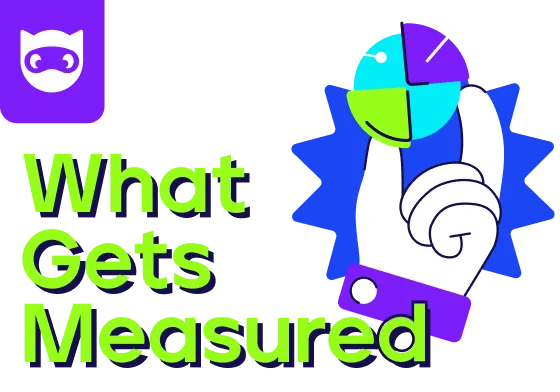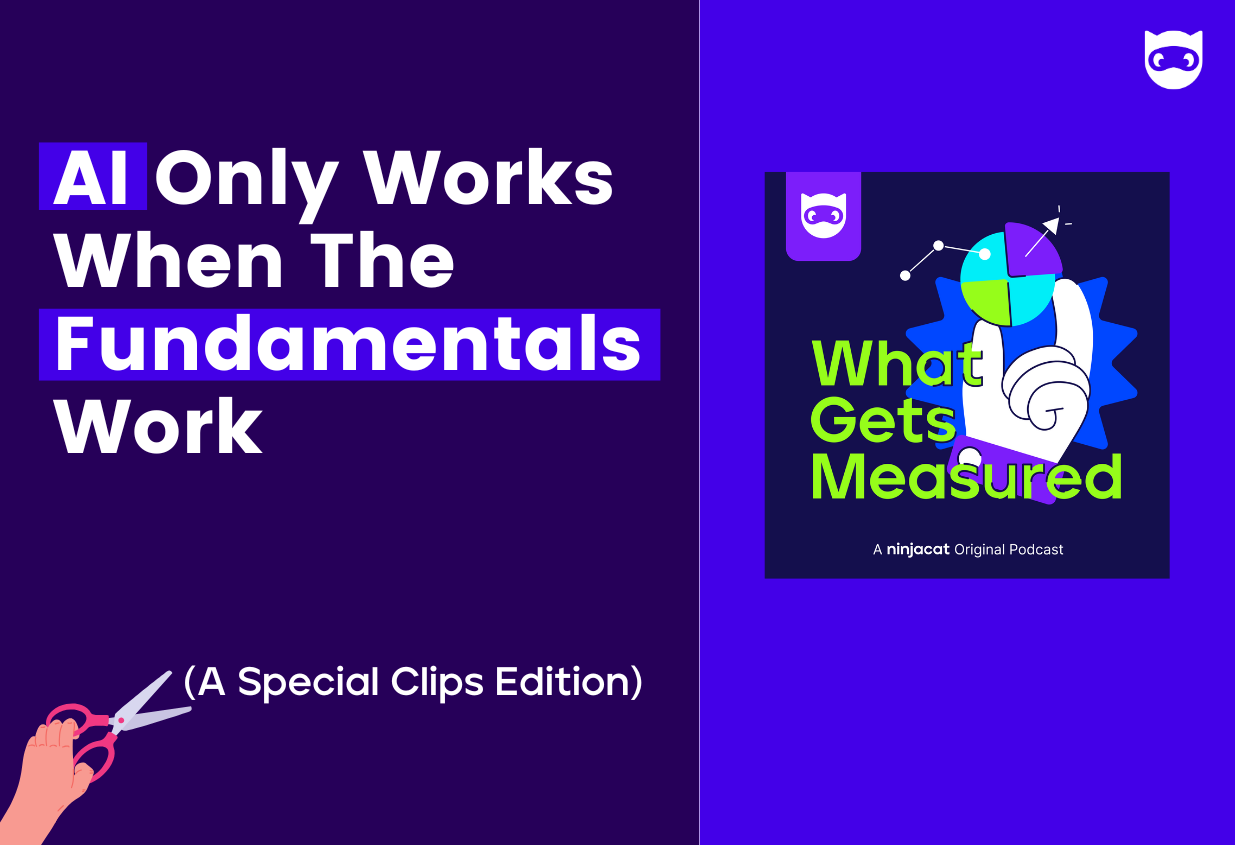Preventing Employee Burnout at Your Agency

Working in an advertising or marketing agency can feel like a rollercoaster. One minute you’re facing a lull in new projects, the next it's "crunch time" and you're working into the evening to “wow” the clients before the deadline strikes. Combine long hours and heavy workloads with the dynamic nature of the advertising industry and it’s plain to see how burnout has become such an issue of concern. So much so, a Canadian nonprofit dedicated to supporting media and advertising professionals created a singing and dancing cracker with a NSFW public service announcement about it!
But seriously, understanding the factors and conditions that lead to employee burnout in agencies is quickly becoming an existential concern to address if agencies hope to retain top talent in the coming years.
Let’s briefly cover how employee burnout happens, define ways the environment of an agency can exacerbate or alleviate stress, and discover a few strategies to help keep staff engaged and optimized against burnout.
How Employees Reach Burnout
It’s hard to miss the plethora of articles and headlines around employee turnover, the “great resignation,” and how companies–and even entire countries–are combating the scourge of burnout. But what is burnout?
Burnout is literally defined as “the reduction of a fuel or substance to nothing through use or combustion.” It’s an apt metaphor for what many people personally experience in a myriad of ways, which can make finding and fixing the issue difficult, particularly in a grind/workaholic culture.
Burnout could be a brainfart that lasts for weeks, it could be a bout of depression that lasts longer, or it can be a crippling, debilitating experience that freezes progress and turns everyday work into a unending battle.
However it’s defined, burnout has a negative impact on not only employee well-being, but the overall quality and consistency of an agency's work product.
“I know from my own personal experience that burnout is no fun for anyone from the point of view of physical and emotional health,” said Jen Fisher, chief well-being officer at Deloitte US. “However, it’s also very bad for business. If your workforce is burned out, your productivity and profits are both affected.”
So what can managers do to better to understand and ameliorate workplace stress and burnout? Well for starters, we should learn the fundamental nature of how emotions work in social settings.
The Unhealthy History of Adlife and Agency Burnout
Employee burnout is perceived to be an individual issue, but research into the contagiousness of emotions show there is proof that burnout can be an endemic, agency-wide phenomenon.
Just like laughter is contagious, so is dejection and depression when we see coworkers languishing. Emotions are socially contagious and can impact the quality of work that emerges from an agency. If the client or boss is happy and enthusiastic about an idea, so is the agency staff. If a client or boss is stressed, anxious, and doubtful, then you can only imagine what the grunts are feeling, no matter how many free snacks or yoga are on offer.
And guess what? For almost the entire history of the profession, workplace stress in advertising has been an alarming health concern, one that has largely gone unaddressed. Here is a passage from Stephen Fox’s amazing history of advertising, “The Mirror Makers” in which he describes the health consequences of burnout facing ad agencies and execs in the late 50s:
“A survey of advertisers in 1957 found that nine out of ten ad people routinely took work home at night. “What other business has so many young men anxious to break in,” asked one adman, “and so many older men anxious to break out?” A study in 1956 by Life Extension Examiners of New York compared the health of executives in manufacturing, banking, and advertising. The ad people showed up worst in ten of eighteen categories, including high blood pressure, organic heart and prostate problems, and abnormal blood counts. From 1949 to 1959, at a time when life expectancy for white males was 67.1 years, the average age at death in Advertising Age’s obituaries was 59.9. “It’s a killing business,” concluded Lou Wasey, seventy-one years old in 1956. “Most of the men who have been along with me in business - they’re all dead, and they were younger than I.”
Suffice it to say, modern agencies may not be faring any better.
In a Business Insider article from Sept. 2020, Karuna Sharma brought attention to agency burnout by highlighting the tragic death of a promising copywriter from cardiac arrest earlier in the year. Sharma reached out to several global agencies in response to the incident, to see how they were addressing burnout. She received no responses.
However, Sharma did reach a few smaller agencies for comment; “Agencies that did agree to speak to me told me all is well now,” says Sharma.
“They do offer flexible working hours to their employees. But ground reality is not the same. I spoke to junior copywriters from the same agencies and they painted a different picture altogether. They said that they are overworked, constantly in-between calls and do not have the time for their families even if they sit right next to each other. They eat their meals as they work and even have to keep their personal life aside on the weekends.”
Recognizing the causes and impacts of burnout and stress, and distinguishing "grind culture" from healthy, productive behaviors, is crucial for addressing the issue. Let's explore some ways agencies can either contribute to or help alleviate burnout.
How Agency Culture Can Reduce or Inflame Burnout
In researching this article, we spoke with dozens of people in staff and leadership roles at agencies of all sizes about burnout, and there were some very consistent themes to the responses.
Ways to inflame burnout in an agency include, but are not limited to:
- Not shielding team from long hours/weekends
- Unrealistic workloads
- Not giving credit for work
- Toxic ego environments / toxic positivity
- Over-promising, under billing
- Profit over service mentality
“The work itself doesn’t burn people out,” says Nick Ellis, Creative Partner and Founder of the UK ad agency, We Are Halo. “It’s the pressure from the agency and clients (and how their expectations are managed) that does the damage. If senior management looked up from the numbers and stopped billing for time like a lawyer things would get better.”
Creative strategist, author, and editor at Shots Creative, Amy Charlotte Kean was a bit more direct in her anti-burnout advice; “If we celebrated and nurtured ego less, we’d all be a lot f**ing happier.”
Ways to reduce employee burnout in an agency include, but are not limited to:
- Boundary setting, especially role modeled by leadership
- Give credit
- Streamline work (fewer meetings, messages, misunderstandings)
- Protect staff, defend the work, establish buffers between clients
- Compassion, Accountability, and Empathy from leadership
One piece of strategic advice on burnout reduction we received from a former ad exec is to reduce the amount of specialties a “full-stack” agency claims to be able to deliver, by strengthening certain tactical approaches and tightening their business model.
If an agency focuses on being the best at acquisition marketing or performance marketing, rather than everything under the sun, that agency stands a chance at building confidence within a niche and offering distinct value.
“Stop running agencies like other industries,” says Derek Walker, seasoned ad vet and founder of Brown and Browner. “Embrace our differences, get creative in how we operate.”
Effective Strategies to Prevent Burnout At Your Agency
So, how can agencies engineer operating procedures that prevent burnout, rather than choosing to handle the issue only when it becomes an existential necessity?
Time Management
One effective strategy is the Time Management Matrix. This visual tool helps employees categorize tasks based on urgency and importance. "A lot of agency staff spend their time in Zone 1," says Spencer Johnson, VP of People & Culture at NinjaCat, "where everything is an emergency." Johnson advocates for focusing on Zone 2 activities, which are important but not urgent, to create meaningful work and reduce stress.

Johnson, who previously spent over a decade in various roles in advertising and marketing agencies, is a big fan of the Time Management Matrix because it helps employees understand, manage, and avoid the types of activities that can lead to burnout.
“The stresses of agency life and client demands can never be fully removed. If you can better understand the conflicting, compounding, or chaotic forces that cause stress, and work to keep people in Zone 2 as much as possible, producing meaningful work that provides them with purpose, you can get ahead of the burnout on both the individual and agency level.”
Flexible Work Schedules
Agencies like Emotive Brand have introduced "Maker Hours," allowing staff to block time for deep work and personal recharge. This innovative approach to time-blocking helps employees focus on their tasks without constant interruptions, boosting both productivity and well-being.
Strong Work-Life Boundaries
Deloitte has implemented stronger work-life boundaries to tackle burnout at scale. This includes policies that encourage employees to disconnect after work hours. Similarly, Portugal’s "Right to Disconnect" law prevents companies from contacting staff after hours, setting a precedent for healthier work environments. Encourage employees to focus on self-care and establish routines like daily walks or journaling to maintain predictability and control outside of work hours.
We’ve covered several ways to address and prevent burnout in ad agencies, and outlined the reasons why it’s important to nip the problem in the bud. Addressing burnout requires a multifaceted approach. By adopting strategies like time management, flexible work schedules, and strong work-life boundaries, agencies can create healthier, more productive environments. However, the challenge remains in balancing these initiatives with industry competitiveness. The real question is whether agencies see burnout prevention as a priority or a liability, and how they will respond to this critical issue.




.png)
